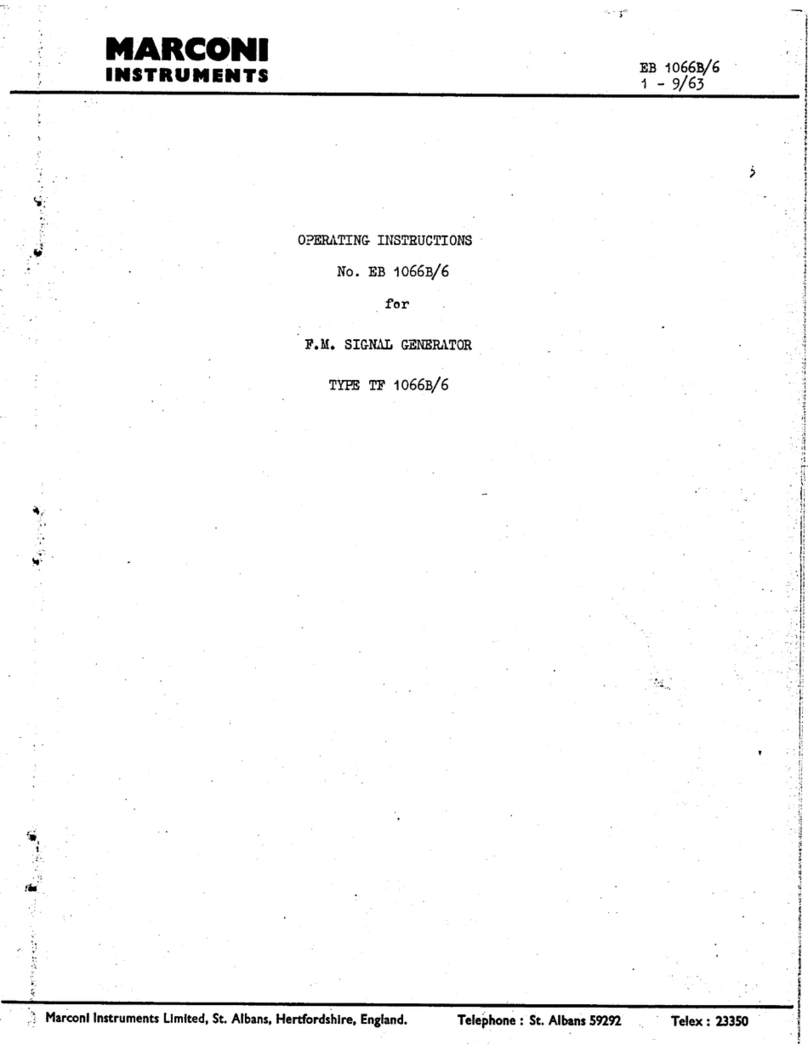
An extended hysteresis facility allows for extended electronic control of RF output level
without introducing mechanical attenuator transients when testing squelch systems.
Alow intermodulation mode can be selected which disables the RF levelling system and
improves the intermodulation performance when combining the outputs of two signal generators.
Achoice of calibration units is available to the operator and provision is made for the
simple conversion of units (for example, dBm to jiV). Calibration data for the output level is
held in memory and may be altered from the front panel or over the interface bus.
The output level can be offset by up to ±2 dB by keyboard entry. Offsets from the
calibrated value may be used to compensate for cable or switching losses external to the
generator. This facility can be used as ameans of deliberately offsetting the output level to
ensure that all generators in an area give identical measurements. While using the offsetting
facility, the principal calibration of the generator is not lost and may be returned to at any time.
An electronic trip protects the generator output against reverse power of up to 50 W,
preventing damage to output circuits when RF or DC power is accidently applied.
Modulation
Comprehensive amplitude, frequency (plus wide bandwidth FM), phase and optional
pulse modulation are provided for testing awide range of receivers. An internal modulation
oscillator is provided, having afrequency range of 0. 1Hz to 500 kHz, with aresolution of
0.1 Hz. Asecond modulation oscillator can be included as an option. Two independent BNC
inputs on the front panel allow external modulation signals to be mixed with the internal
signal(s). Therefore, amaximum of four modulation sources may be available at one time. These
sources may be combined to give the single, dual, composite and dual composite modes, see
'MODULATION MODES’, Chap. 3-1
.
The signalling facility allows testing of radio equipment with sequential and sub-audible
tone capability. The sequential calling tone system is accessible from the utility menu for all four
modulation modes. Sub-audible calling tones are specified within the modulation source select
display.
Incrementing
All major parameters can be incremented or decremented in step sizes entered via
keyboard entry or the GPIB. If no step size is entered for aparameter, the steps are preset to
1kHz for earner frequency, 1kHz for modulation oscillator and LF frequency, 1kHz for FM
deviation, 1%for AM depth and 1dB for output level.
In addition the rotary control can be used to vary the parameter with the sensitivity of the
knob being changed by means of the xlO and -*-10 keys.
Sweep
The sweep capability of the 2040 series allows comprehensive testing of systems. Four
parameters are used to specify sweep; start, stop, number of steps and time per step. These are
specified by the user, with upper and lower limits for the parameter values being dependent on
the function. The sweep markers menu is available by soft key selection on the sweep display,
allowing the placement of up to five user defined markers.
Non-volatile memory
The non-volatile memory allows 50 complete instrument settings, 50 partial settings, 100
carrier frequency settings, 20 sweep settings and 20 signalling tone sequences to be stored for
later use at any time.
46882-074C 1-3





























